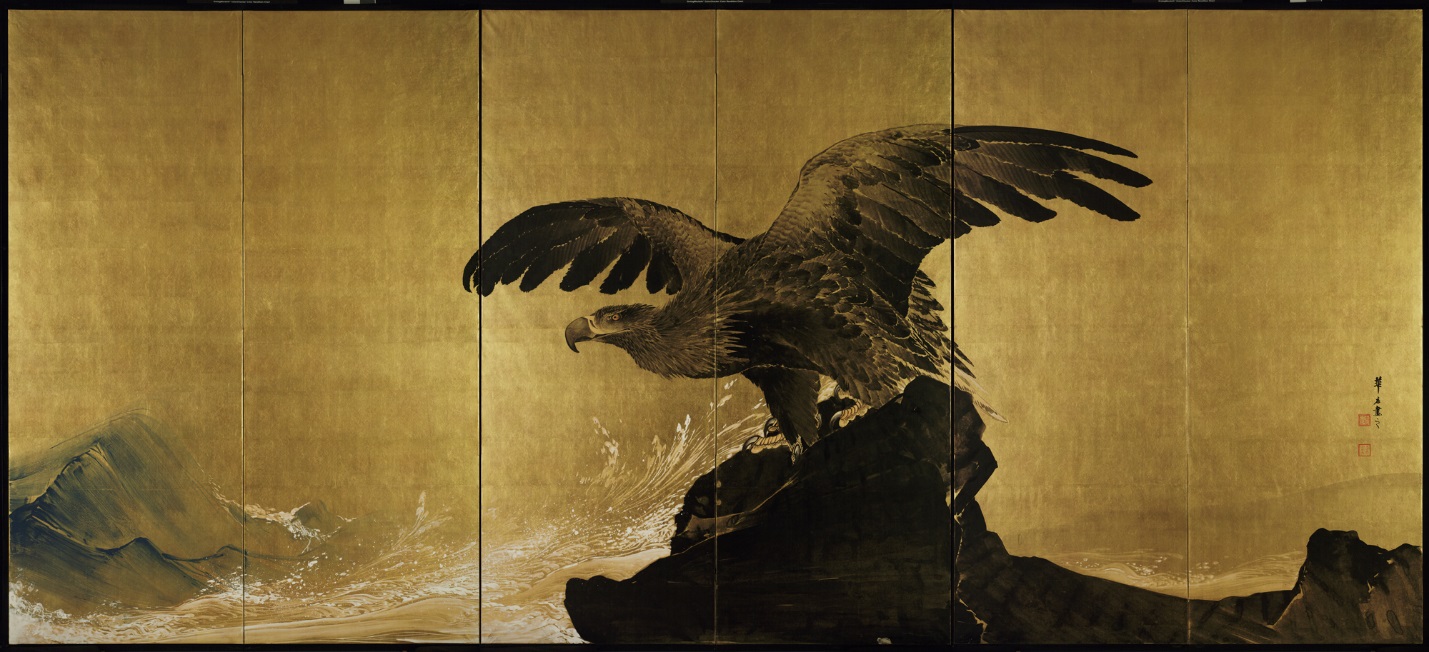SEATTLE ART MUSEUM OFFERS NEW WORK OF ART TO DENVER ART MUSEUM FOR THE OUTCOME OF SUPER BOWL XLVIII

Update: In our bet against the Denver Art Museum, we have respectively withdrawn our offer of a Forehead Mask due to the wishes of the Nuxalk Nation where the mask originates. In its place, SAM is now offering a stunning piece from our Asian Art Collection.
The new work on the line is a six-paneled Japanese screen from 1901, Sound of Waves by Tsuji Kakō. This piece is quite large, measuring approximately 5 feet by 12 feet, and features a powerful eagle with outstretched wings in a panoramic view of the seashore that stretches across the painted screen.
Director Kimerly Rorschach has faith in our Seahawks. She says, “Sound of Waves is a masterpiece from our great Japanese art collection and a reflection of Seattle’s close connection to Asia. But we are still confident that The Bronco Buster will be heading to Seattle.”
For the record, Denver Art Museum is still offering up The Broncho Buster, a bronze icon of the West by Frederic Remington from their western American art collection.
The bet continues a tradition that began in 2010 between the Indianapolis Museum of Art (J.M.W. Turner’s “The Fifth Plague of Egypt,” a 4-by-6-foot canvas from 1800 that shows a landscape of dark, roiling clouds gathering oppressively above a distant pyramid) and the New Orleans Museum of Art (Claude Lorrain’s idyllic 1644 landscape, “Ideal View of Tivoli”). The Turner traveled, and hung for three months beside the Lorrain.
The tradition continued in 2011 between the Milwaukee Art Museum and the Carnegie Museum of Art. MAM’s Gustave Caillebotte painting, “Boating on the Yerres,” stayed at home while the CMA’s Pierre-Auguste Renoir, “Bathers With Crab,” came to visit Milwaukee.
(The Los Angeles Times offers up a great mix of football and museum insights here for anyone who’s interested in reading more.)
Super Bowl XLVIII will be played Sunday, February 2. Dates of the loan are still being finalized.